 |
 |
 |
| |
Lopinavir/ritonavir+Tenofovir/Emtricitabine Is Superior to Nevirapine+Tenofovir/Emtricitabine for Women with prior Exposure to Single-dose Nevirapine: A5208 ("OCTANE")
|
| |
| |
Reported by Jules Levin
CROI 2009 Feb 8-12 Montreal
The presenter said: "several factors suggest that the superiority of LPV among women in this study in Trial 1 is associated with prior sdNVP exposure and not simply with superior performance of LPV in general. These factors are the association of difference in treatment outcomes with baseline resistance and to a lesser extent with time since last sdNVP exposure and the DSMB recommendation to continue the 2nd study."
During the Questioning after the presentation the presenter said they did not have the capability to test for minority variants but testing for minority variants is underway. Adherence did not explain differences as adherence was high and there was no adherence difference between treatments.
Shahin Lockman and A5208/OCTANE Study Team
Brigham and Women`s Hosp, Boston, MA, US
Background: Single-dose nevirapine (sdNVP) reduces mother to child transmission of HIV, but can select for NVP-resistant virus. Optimal ART for women with prior sdNVP exposure is unknown.
Methods: In 7 African countries, 243 HIV-1-infected women who had taken intrapartum sdNVP at least 6 months earlier and had screening CD4 count <200 cells/mm3 were randomized to ART with tenofovir/emtricitibine (TDF/FTC) and either lopinavir/ritonavir (LPV/r) twice daily (n = 120) or NVP twice daily (n = 123). The primary endpoint was time from randomization to either death or confirmed virologic failure (plasma HIV-1 RNA <1 log10 below baseline 12 weeks after treatment initiation, or ≥400 copies/mL at or after 24 weeks). The primary analysis was modified intent to treat, excluding 2 women who did not start study treatment. In October 2008, the DSMB recommended early release of study findings. Data are included through this date; results are not reported for an ongoing, parallel trial in 502 women with no prior sdNVP (per DSMB).
Results: At entry, median values were as follows: age 31 years, CD4 139 cells/mm3, HIV-1 RNA 5.15 log10 copies/mL, time since last sdNVP use 17 months, and duration of follow-up 73 weeks.
All women recalled sdNVP use; 73% had written documentation that sdNVP was provided. Significantly more women in the NVP arm (31, or 26%) than the LPV/r arm (10, or 8%) reached the primary endpoint (p = 0.0007). Of these, 36 had virologic failure (27 in NVP, 9 in LPV/r arm); 5 died without preceding virologic failure (4 in NVP, 1 in LPV/r arm). None of the 5 deaths were reported to be treatment-related. The difference between the NVP and LPV/r arms appeared to decrease with increasing time between last sdNVP exposure and ART initiation. Among women starting ART 6 to <12 months after sdNVP, 15 (37%) and 1 (3%) in the NVP and LPV/r arms, respectively, reached the primary endpoint, vs 12 (26%) and 6 (12%) when last sdNVP exposure was 12 to < 24 months prior, and 4 (12%) and 3 (10%) when last sdNVP exposure was ≥2 years prior. Baseline genotypes, run retrospectively in 239 women, showed NVP resistance in 33 (14%; K103N in 28 of 33); of these 33, 11 of 15 (73%) in the NVP arm reached the primary endpoint vs 1 of 18 (6%) in the LPV/r arm. Among the 206 women without baseline NVP resistance, 18% (NVP arm) vs 9% (LPV/r arm) reached the primary endpoint. More women (15, 12%) discontinued NVP due to adverse events than LPV/r (1, 1%).
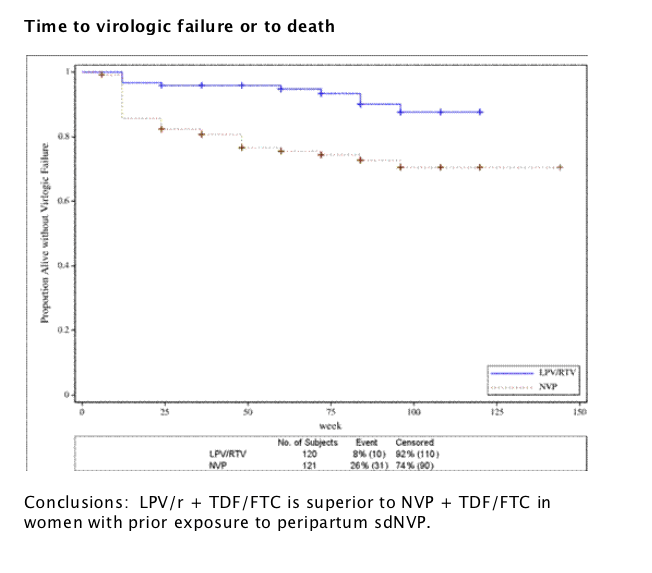
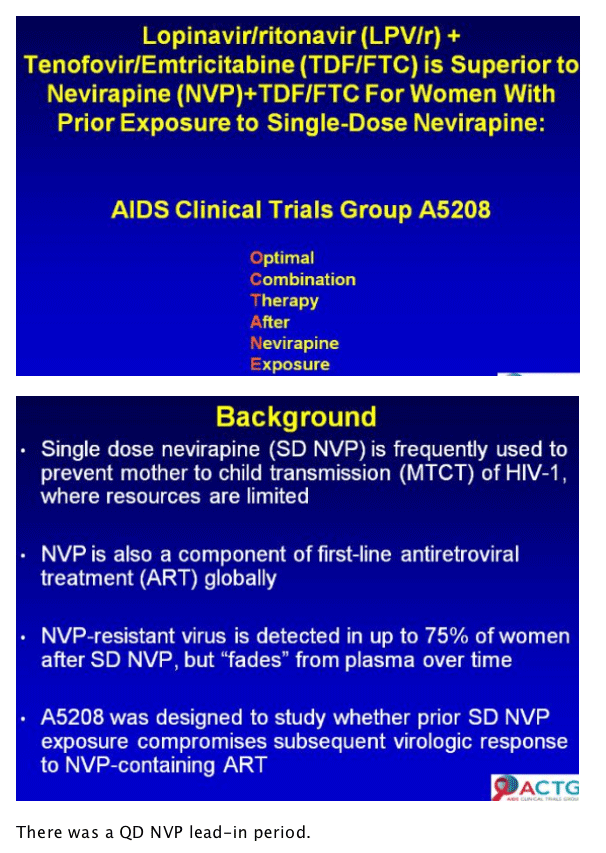
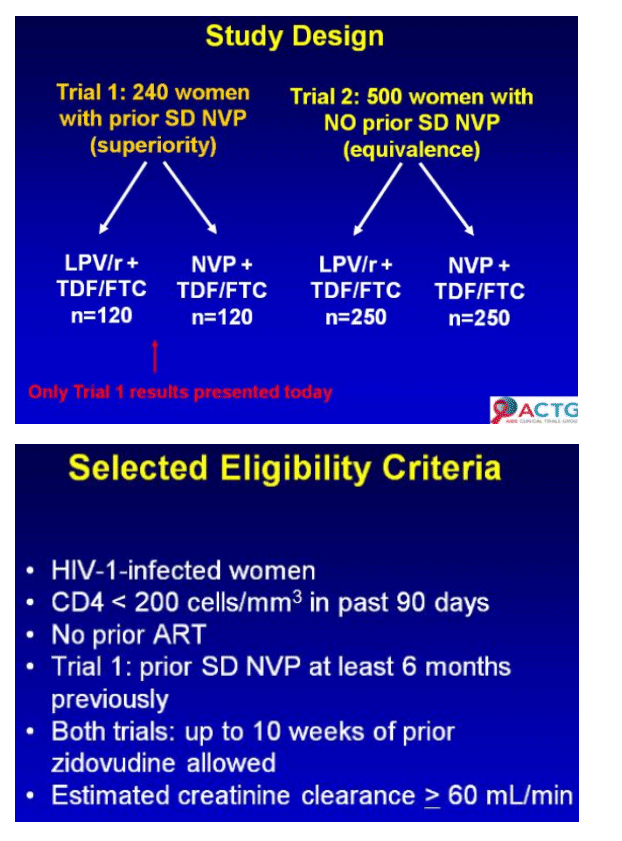
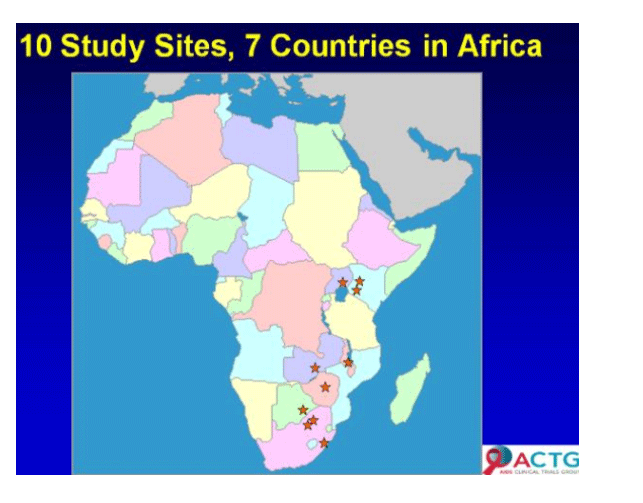
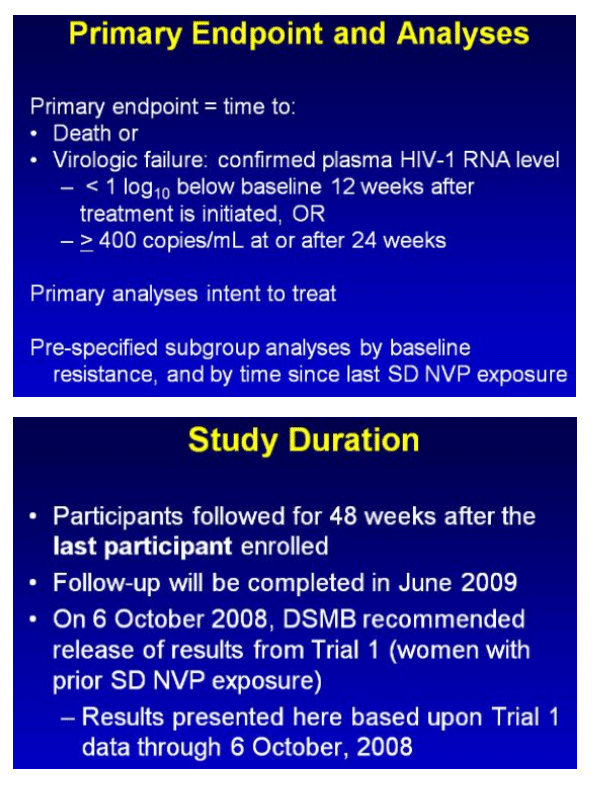
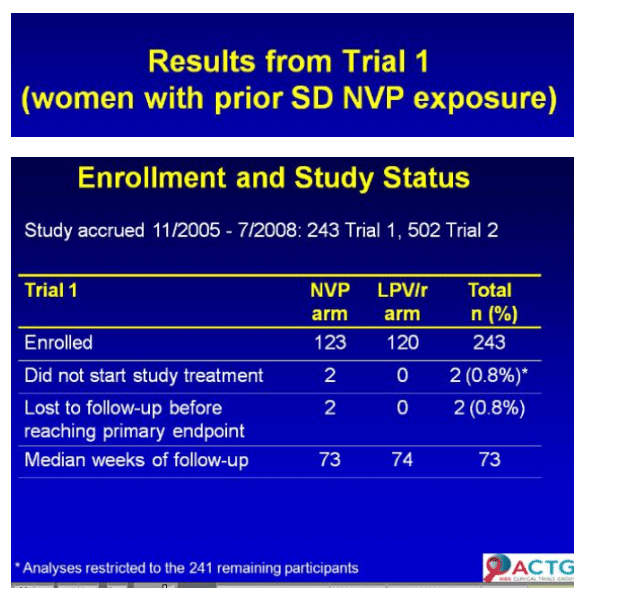
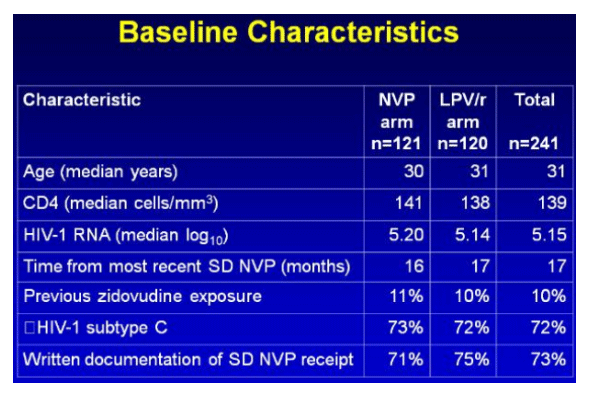
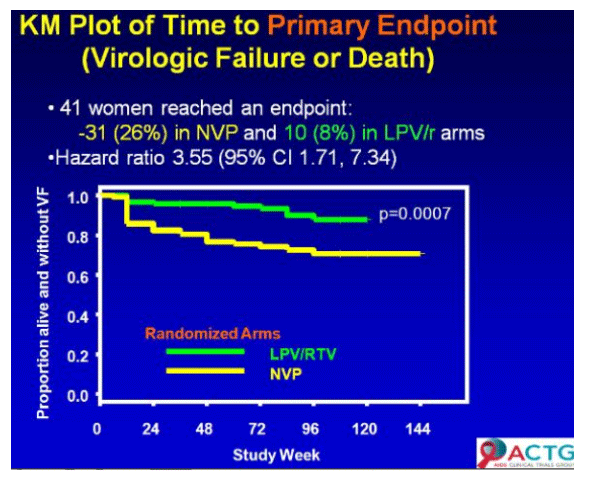
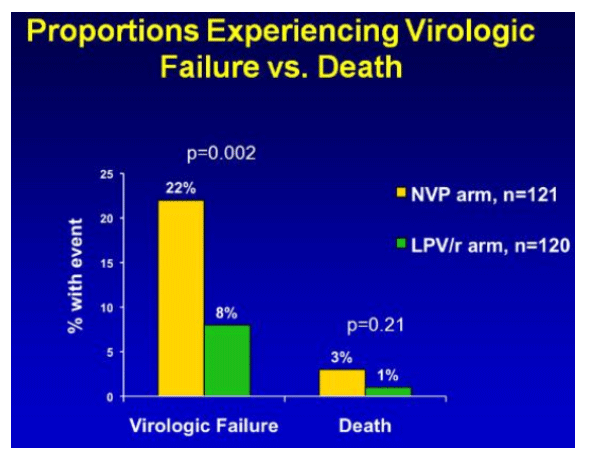
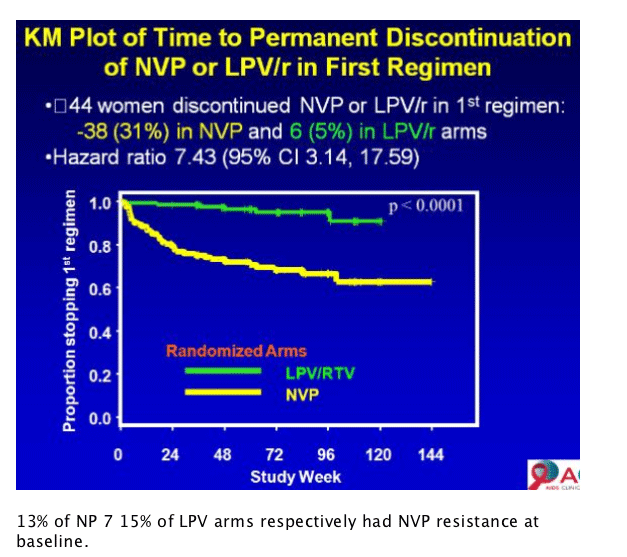
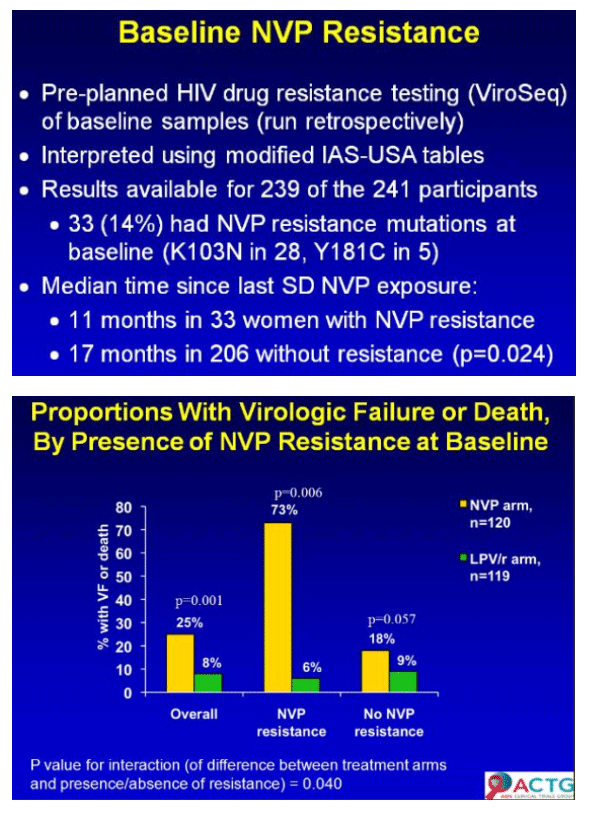
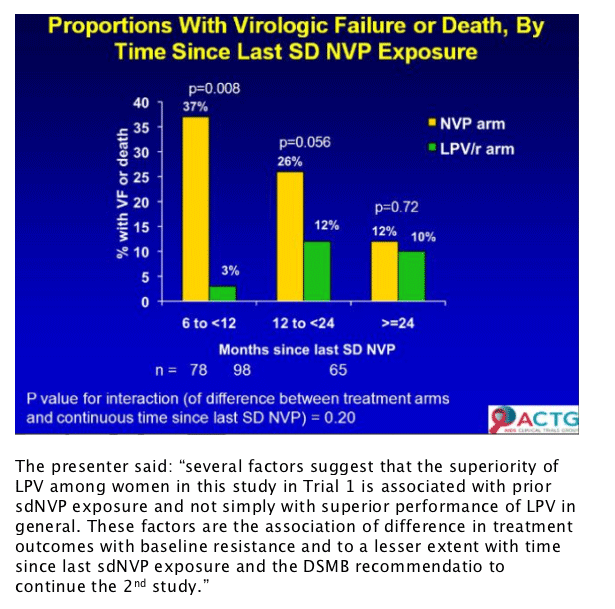
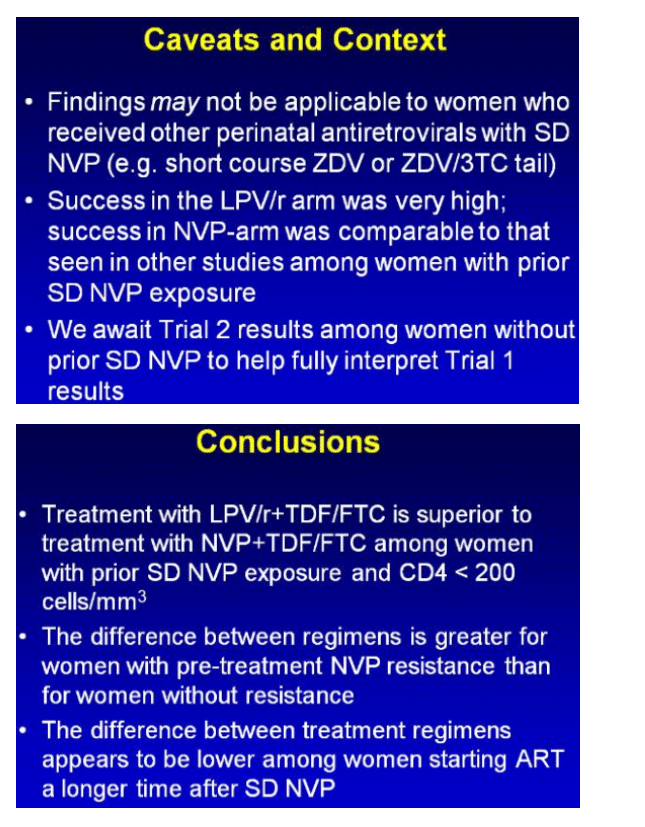
|
| |
|
 |
 |
|
|